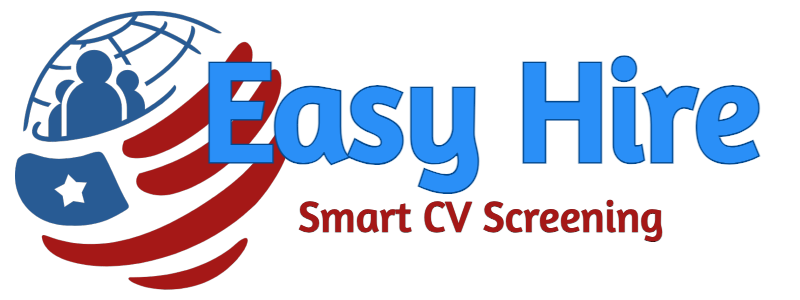
ATS vs Traditional Recruitment: Why AI is the Future
Table of Contents
- Introduction: The Hiring Revolution
- Traditional Recruitment: Still Holding Us Back?
- Enter AI-Powered Hiring: Smarter, Faster, Fairer
- Key Differences: ATS vs Traditional Recruitment
- Real-World Success Stories
- How to Transition from Traditional to AI-Powered Hiring
- FAQs About AI in Recruitment
- Conclusion: AI-Powered Hiring Is the New Standard
Introduction: The Hiring Revolution
Imagine sorting through hundreds—sometimes thousands—of resumes manually, comparing credentials, checking qualifications, and trying to remain unbiased. That was recruitment for decades.
Fast forward to today, and a digital shift has taken place. Artificial Intelligence (AI) and smart software are automating hiring at scale. Yet many companies still rely on outdated systems. In this article, we’ll break down the clear differences between ATS vs traditional recruitment strategies, explaining why AI-powered hiring is rapidly becoming the go-to method for modern teams.
Let’s dive in and discover how you can upgrade your hiring process for efficiency, fairness, and scalability.
Traditional Recruitment: Still Holding Us Back?
Despite living in a digital-first world, many organizations continue to recruit like it’s 1995. Hand-reviewed resumes, spreadsheet tracking, endless phone calls—sound familiar?
Let’s unpack why traditional recruitment isn’t working in today’s fast-moving job market.
Time-Consuming Manual Processes
Most recruiters admit that screening resumes is one of the most tedious and time-draining aspects of hiring. According to a CareerBuilder report, the average job posting receives 250 resumes. Out of those, typically fewer than 5 are interviewed. That’s hours of work per position.
Hiring teams often get stuck in:
- Manually reading and ranking resumes
- Sending out emails and follow-ups
- Coordinating calendars for interviews
- Handling reference checks via phone
If you’re managing multiple roles at once, the task becomes overwhelming. No wonder top candidates drop off after days—sometimes weeks—without hearing back. Recruiters lose valuable time they could be spending on rapport building or strategy. Instead, they’re lost in administrative backlogs.
High Risk of Unconscious Bias
Human beings are wired with cognitive biases—most of them unintentional. Recruiters may form impressions based on a candidate’s name, school, or even how a resume is formatted.
Numerous studies back this up. A landmark Harvard study found resumes with “white-sounding” names were 50% more likely to get callbacks than those with traditionally Black, Hispanic, or Asian-sounding names—even when credentials were identical.
Bias can affect:
- Who gets invited for interviews
- What questions are asked
- How cultural fit is interpreted (often a mask for similarity bias)
- Who ultimately gets the offer
This not only limits diversity—it compromises hiring quality in traditional recruitment.
Expensive and Inefficient
According to the Society for Human Resource Management (SHRM), the average cost per hire in the U.S. is over $4,700. That adds up fast—especially if you’re hiring for multiple roles or dealing with high turnover.
In traditional methods, costs stack up from:
- Agency and headhunter fees
- Lost productivity from vacant positions
- Manual tools and outdated systems
- Time spent by internal staff
Bottom line: the longer it takes to make a hire, the more it costs your company. Every extra day spent screening candidates is a day without someone doing the work that needs to be done.
Enter AI-Powered Hiring: Smarter, Faster, Fairer
Meet the game-changer: AI-powered Applicant Tracking Systems (ATS). These platforms do more than just store resumes—they actively review, analyze, and rank candidates based on qualifications and fit.
We’re not talking about basic keyword matchers. Today’s AI-enhanced tools like EasyHireApp understand context, learn from past hiring decisions, and even predict candidate performance. An AI-powered hiring strategy is crucial.
Here’s how AI-powered hiring flips the script.
Screen Thousands of Resumes in Minutes
Modern ATS platforms use Natural Language Processing (NLP) and machine learning to analyze resumes and rank candidates automatically. This means instead of spending hours sorting through stacks of resumes, AI does the heavy lifting for you.
Unilever, for example, implemented an AI-driven hiring platform and slashed their hiring time by 75%, while improving candidate fit. Their system now evaluates over a million applications annually across the globe—something human recruiters could never scale.
Additional features often include:
- Automated resume parsing and profile building
- Skill matching against job descriptions
- Predictive scoring based on past hiring outcomes
- Integration with job boards and CRM tools
In short: AI makes recruiting faster and more strategic. This is a key advantage in the ATS vs traditional recruitment debate.
Reduce Bias for Fairer Hiring
AI doesn’t judge a candidate by name, gender, or school—only by qualifications, skills, and experience. Smart systems are designed to remove demographic identifiers to prevent unconscious bias during screening.
A recent study by the National Bureau of Economic Research found that AI-based hiring tools cut gender bias by 44%, and racial bias by up to 23%, when compared to traditional recruitment.
Some systems also alert hiring managers when job descriptions include biased language, such as overly masculine phrases or unnecessary degree requirements that dissuade underrepresented candidates.
The benefits?
- More diverse shortlists
- Equal opportunity initiatives backed by tech
- Legal risk mitigation in hiring practices
When humans and machines work together with checks and balances, companies can make more inclusive hiring decisions with AI-powered hiring.
Lower Cost per Hire
By automating repetitive tasks like screening, scheduling, and communications, AI dramatically cuts the cost associated with traditional methods.
Companies that adopt AI-driven ATS tools report (according to Deloitte):
- 30–50% reductions in hiring costs
- Less dependency on agencies and external recruiters
- Reduced time-to-hire (often within days, not weeks)
- Greater ROI through better-fit hires
When software handles initial stages, your team can focus where it matters—interviewing high-potential talent, strengthening employer brand, and improving candidate experience.
Key Differences: ATS vs Traditional Recruitment
To summarize what we’ve discussed so far, here’s a side-by-side comparison of ATS vs traditional recruitment.
| Factor | Traditional Recruitment | AI-Powered ATS |
|---|---|---|
| Speed | Manual screening takes days to weeks | Resume scanning in under 10 minutes |
| Bias | Human biases often influence decisions | Data-driven ranking reduces bias |
| Cost | ~$4,700+ per hire | Up to 50% cost savings |
| Candidate Experience | Slow replies and unclear timelines | Instant feedback via automated systems |
| Scalability | Difficult with limited staff | Easily scale to thousands of applicants |
| Data Usage | Minimal analytics or insights | Predictive hiring and performance data |
It’s not just about replacing people—it’s about empowering them to make smarter choices with AI-powered hiring tools.
Real-World Success Stories
Still unsure if switching over is worth it? Let’s look at how some leading organizations have harnessed AI in their hiring strategies.
- Google: Uses AI in its hiring platforms to study behavioral signals, interview responses, and resume data to predict candidate success. They’ve reduced mis-hires by 25% and improved interview-to-offer ratios.
- EasyHireApp Clients: Mid-sized and large businesses alike report up to 70% faster screening times and three times more diverse hiring pipelines since implementing AI. This showcases the real-world impact of AI-powered hiring.
- L’Oréal: Replaced its initial CV screening with an AI chatbot and video interview solution, resulting in 92% candidate satisfaction and a more efficient recruiting funnel across 14 countries.
How to Transition from Traditional to AI-Powered Hiring
Making the leap doesn’t have to be complicated. Here’s how you can get started with AI-powered recruitment:
-
Audit your current recruitment workflow.
- Where’s the bottleneck?
- Are you losing candidates during resume screening?
- How long is each hiring stage on average?
-
Identify what you need from a new system. Look for AI capabilities like:
- Resume parsing
- Predictive candidate scoring
- Automated scheduling and messaging tools
- Chatbot support for FAQs and pre-screening
- Get buy-in from stakeholders. HR leaders, team managers, and IT departments all need to be aligned. Share case studies and expected ROI to build support.
- Train your team. Technology is only as effective as the people using it. Combine human judgment with AI suggestions for better hiring decisions.
- Monitor and adjust. Use built-in analytics to improve performance over time—track qualified applications, diversity metrics, time-to-hire, and offer acceptances.
EasyHireApp Sample Components:
This is an example of a card component for displaying candidate information or feature highlights, with a subtle elevation.
FAQs About AI in Recruitment
Here are answers to some of the most common questions about AI-powered hiring and ATS:
1. What is an ATS?
An Applicant Tracking System (ATS) is a software tool that helps companies manage the hiring process. It organizes resumes, tracks candidate progress, and often includes AI features like resume parsing and predictive scoring to streamline recruitment. Understanding an ATS is key when considering ATS vs traditional recruitment.
2. How does AI reduce bias in hiring?
AI-powered hiring tools remove identifiable information like names, ages, and genders during the initial screening process. They focus solely on skills, experience, and qualifications, which helps minimize unconscious bias and ensures fairer candidate evaluations.
3. Is AI-powered hiring expensive?
Not at all! While there’s an upfront cost for implementing an AI-powered ATS, it’s a cost-effective solution in the long run. Companies often save 30-50% on hiring costs thanks to reduced manual labor, faster time-to-hire, and better-fit hires.
4. Can AI replace human recruiters?
No—AI is designed to support, not replace, human recruiters. It automates repetitive tasks like resume screening and scheduling, freeing up recruiters to focus on relationship building, interviews, and strategic decision-making. The best results come from combining AI efficiency with human insight.
5. What’s the best AI tool for recruitment?
The “best” tool depends on your needs, but platforms like EasyHireApp are highly rated for their comprehensive features, including resume parsing, automated scheduling, chatbot support, and detailed analytics for AI-powered hiring success.
6. How long does it take to implement an AI-powered ATS?
Implementation timelines vary, but most AI-powered ATS platforms can be set up within a few weeks. Many providers offer onboarding support and training to help your team get started quickly.
7. Will candidates know AI is being used in the hiring process?
Transparency is key. Candidates should be informed if AI is part of your hiring process. Most AI tools enhance the candidate experience by providing faster responses and smoother interactions, which can improve your employer brand.
8. Can small businesses benefit from AI-powered hiring?
Absolutely! AI-powered ATS tools are scalable and work for businesses of all sizes. Even small teams can save time, reduce costs, and improve hiring outcomes by leveraging AI.
9. How does AI handle unique resumes or unconventional career paths?
Modern AI tools use advanced NLP (Natural Language Processing) to understand context and identify transferable skills. This allows them to evaluate candidates with unique experiences or non-traditional career paths more accurately, a significant step up in the ATS vs traditional recruitment comparison.
10. Is AI-powered hiring secure?
Yes, reputable AI-powered ATS platforms prioritize data security and compliance with regulations like GDPR and CCPA. Always choose a trusted provider with strong security measures in place.
Conclusion: AI-Powered Hiring Is the New Standard
In today’s competitive hiring landscape, staying stuck in the past isn’t just inefficient—it’s expensive. Traditional recruitment methods struggle to keep pace with modern business needs, while AI-powered ATS platforms provide the tools to streamline, scale, and simplify your hiring process.
From faster screening to fairer evaluations and smarter spending, AI is making recruitment easier—for employers and candidates alike. The debate of ATS vs traditional recruitment clearly favors AI as the future.
📌 Ready to say goodbye to manual hiring headaches and embrace efficient AI-powered hiring?
See how EasyHireApp’s AI can upgrade your recruitment process:




